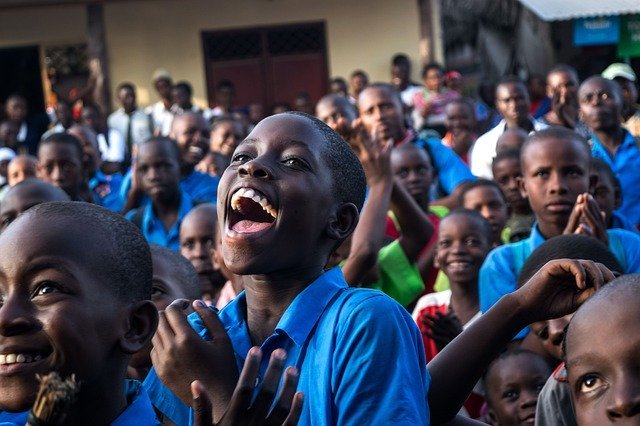When can our schools reopen? Dangers and Dilemmas Of Covid-19

When can our schools reopen? What are the most important pre-conditions to be met before we reopen schools and how can governments practically demonstrate what they intend to do? Any country that cannot answer these three questions with a 95% confidence level must rethink its reopening decisions again.
Final year students are anxious to write their BECE and WASSCE examinations yet, COVID-19 is standing in their way. Education was grounded to ground zero by COVID-19 but the world is looking at how schools can reopen in the midst of COVID-19. With the world’s youngest population at risk of contracting COVID-19, a lot of deep thinking is needed to weather the storm. There is currently no end to COVID-19 however, we must start planning the reopening of schools.
A poorly thought of and implemented reopening strategy will be a dangerous launching pad for schools and may keep children at home for so many months or years especially if no cure is found.
How to keep the Ghanaian school child, for instance, safe against coronavirus should school reopen will put back smiles on the faces of many children from poor homes who might have tasted another bad side of hunger and poverty during the lockdown in Ghana.
The current situation in education where classrooms have remained shut possess a great danger to the education of children and students in general. Learners who find themselves in the marginalized groups who rely on the government’s school free feeding program for their daily meals have lost this glorious opportunity which gives them an extra greater opportunity of being in school for free at the basic and second cycle school levels in Ghana. This may be the case for many such learners across the world.
Covid-19 has widened the inequality gap in education with the introduction of online education. In Africa, there are homes where there is no access to electricity, and TV let alone the internet and computers. 3 Big Challenges of Online Learning In Africa is worth reading to understand the gap created.
Online school has been introduced yet, many students are falling behind in their academics for reasons such as access to computers, internet, and cost of data among others. The longer schools are shut the more children get rusty. It is a fact that many more learners do not have access to the internet and parents cannot afford meals for the children let alone internet services.
In all these it is vital children get back into the classroom when it is safe to do so. A study at the Italian town of Vò on COVID-19 showed that over 80% of the population was tested but no child under age 10 was infected.
However, the UK’s Office of National Statistics’ disclosure findings indicates that everyone is at risk of contracting COVID-19 and findings in Germany by the Christian Drosten at the Charité hospital in Berlin agrees with the UK findings. The contracting findings add to the dilemma of policymakers and governments as to what to do as far as school reopening is concerned.
Where do we start, how do we go about it and when do we reopen? What a world in a dilemma. UNESCO has indicated that school reopening must be guided by 5 key factors which are policy reform, financing education, the safety of learners and teachers, compensating for instructional time, focus on learner’s wellness and protection, and reaching out to the most marginalized.
This means that countries must come out with well thought of policies and reforms in education that take into account the poor and marginalized children and their families. The need to invest in education systems to help them recover from the COVID-19 shock and make the education sector more resilient and agile is key.
The safety of learners must be a top priority to help reduce possible transmission by providing a minimum of water, soap, nose masks, healthy safety procedures and precautions that encourage and promote social distancing and good hygiene practices.
Learners have lost so much time and have fallen behind. To help them catch up, education policies must be evolved by integrating a hybrid of teaching and learning approaches that embrace IT tools including mobile phone usage by students in schools to teach and learn and focus on key relevant areas of the curriculum.
Strategic thinking plus out of the box ideas must blend with science and well thought of plans to gamble the gradual reopening of schools. It will take one successful nation to lead the way.
Source: Wisdom Hammond
 Key Steps to Successfully Launching Your Book in Today’s World
Key Steps to Successfully Launching Your Book in Today’s World  Just In: New WASSCE SC 2023 Withheld Results
Just In: New WASSCE SC 2023 Withheld Results  Over 900 people benefited from scholarship bonanza – Fourth Estate
Over 900 people benefited from scholarship bonanza – Fourth Estate  Establish a Scholarships Commission to regulate all public scholarships – Africa Education Watch
Establish a Scholarships Commission to regulate all public scholarships – Africa Education Watch  Scholarship Bonanza: We’ll soon publish full list of beneficiaries – Fourth Estate
Scholarship Bonanza: We’ll soon publish full list of beneficiaries – Fourth Estate  5 reasons Why WASSCE Graduates Must Pursue Nursing
5 reasons Why WASSCE Graduates Must Pursue Nursing  Federation of Kumasi Traders threaten to sue Kejetia management, Fire Service
Federation of Kumasi Traders threaten to sue Kejetia management, Fire Service  ECG Board Members reject GH₵5.8m PURC fine
ECG Board Members reject GH₵5.8m PURC fine  Driver of truck involved in new train accident jailed 6 months
Driver of truck involved in new train accident jailed 6 months